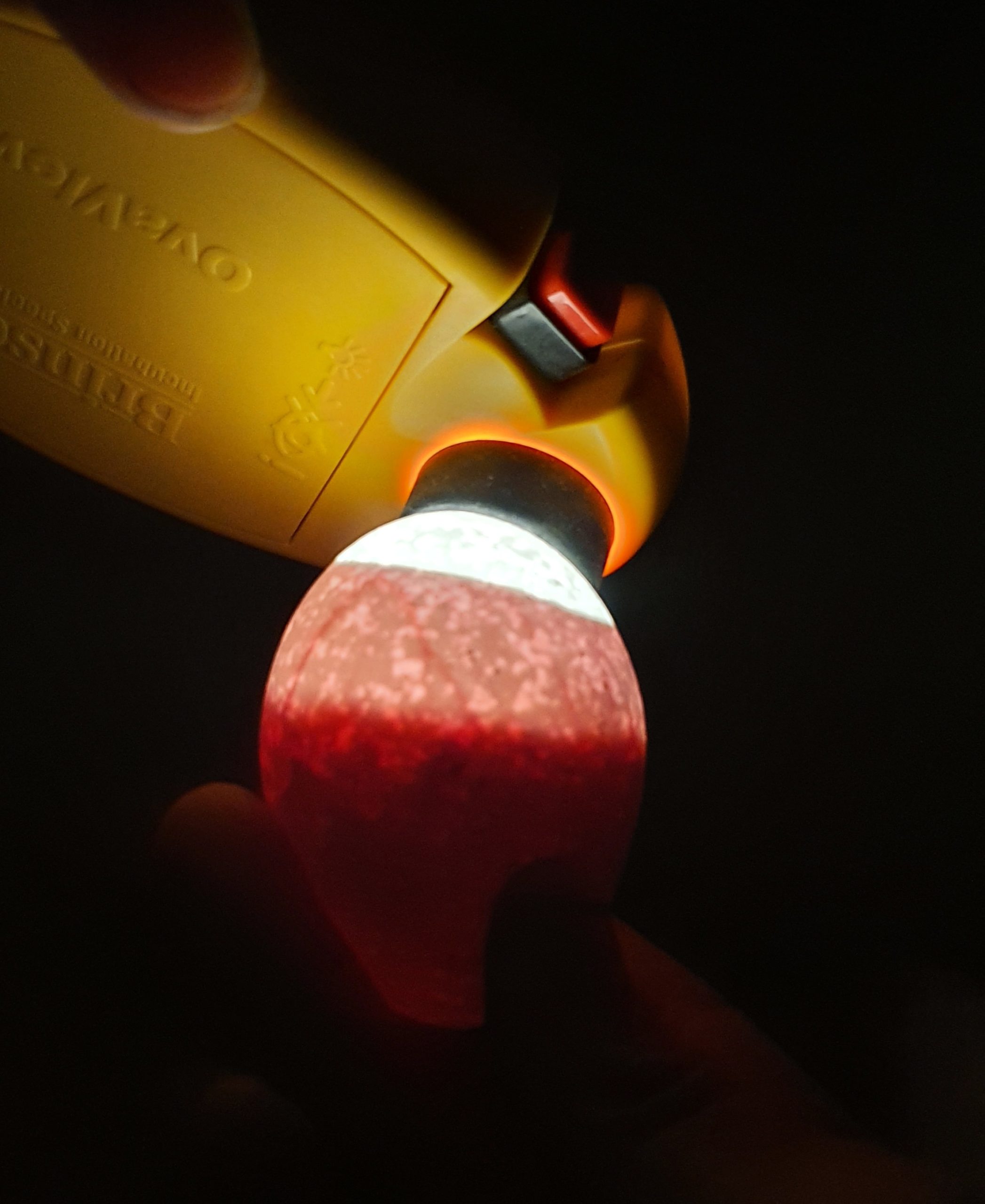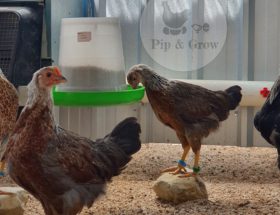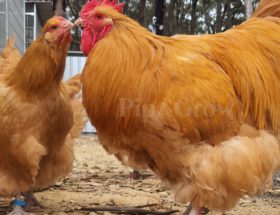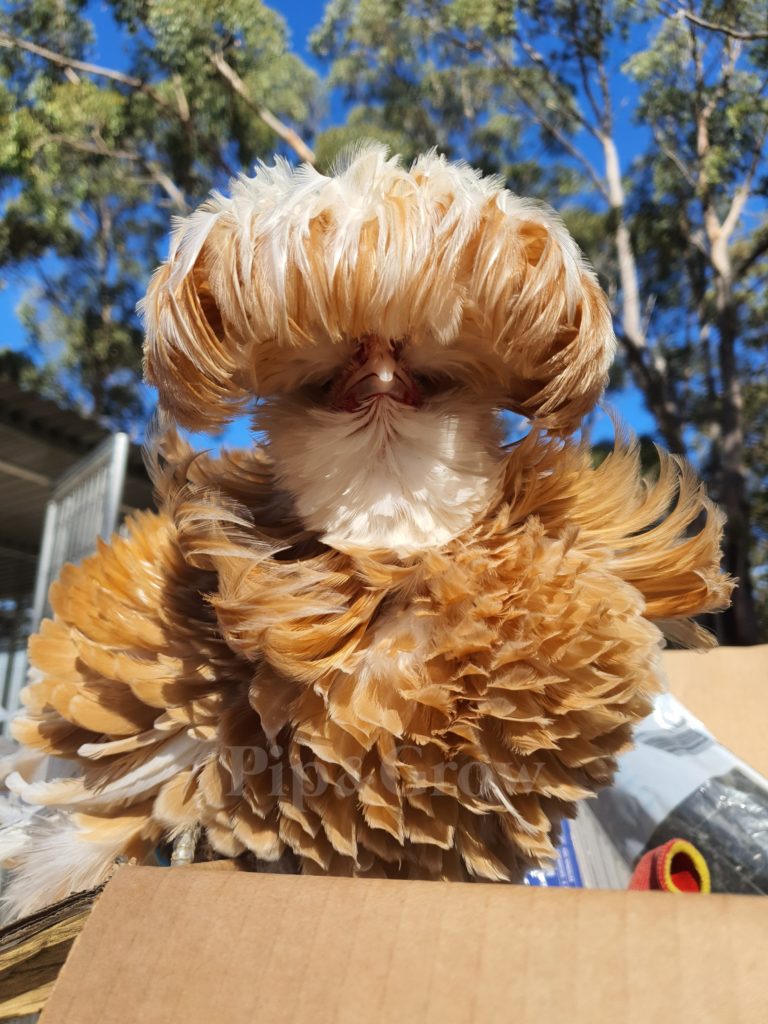
Q. What is a “Frizzle” Chicken?
A. Frizzle chickens can be classified into two distinct categories:
The first category encompasses a specific breed known as the “Frizzle,” originating in Asia. This breed is officially recognized by the Australian Poultry Standard and can be exhibited under its own dedicated category in poultry shows. At Pip & Grow, we do not specialize in breeding this particular breed.
Read More – Frizzle Open Poultry Standard Australia
The second category includes chickens that possess the distinctive trait of curled or frizzled feathers. These chickens carry one copy of the Frizzle gene, which results in their unique appearance. They can be produced by breeding chickens with frizzled feathers with those having normal feathering. At Pip & Grow, we have Polish, Pekins that carries this traits.
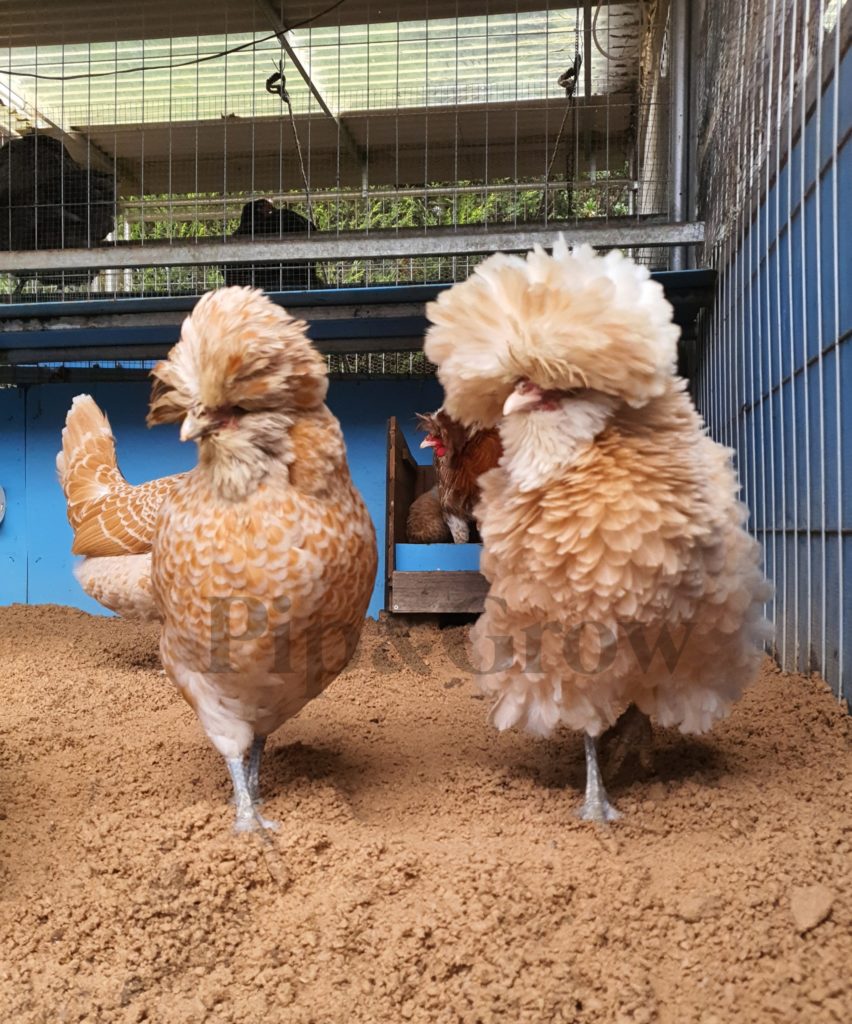
Q. I want to hatch frizzle polish only, Can I purchase “Frizzle Polish” Eggs?
A. While you can acquire eggs laid by Frizzle Polish hens, it’s important to understand that not all resulting chicks will inherit the frizzled feather gene. Some chicks will have standard straight feathers like their father, while others will inherit their mother’s frizzle feathers. The determination of which chicks carry the frizzle feather gene can only be made after they hatch, and it’s essential to recognize that no breeder can guarantee frizzled offspring from fertile eggs.
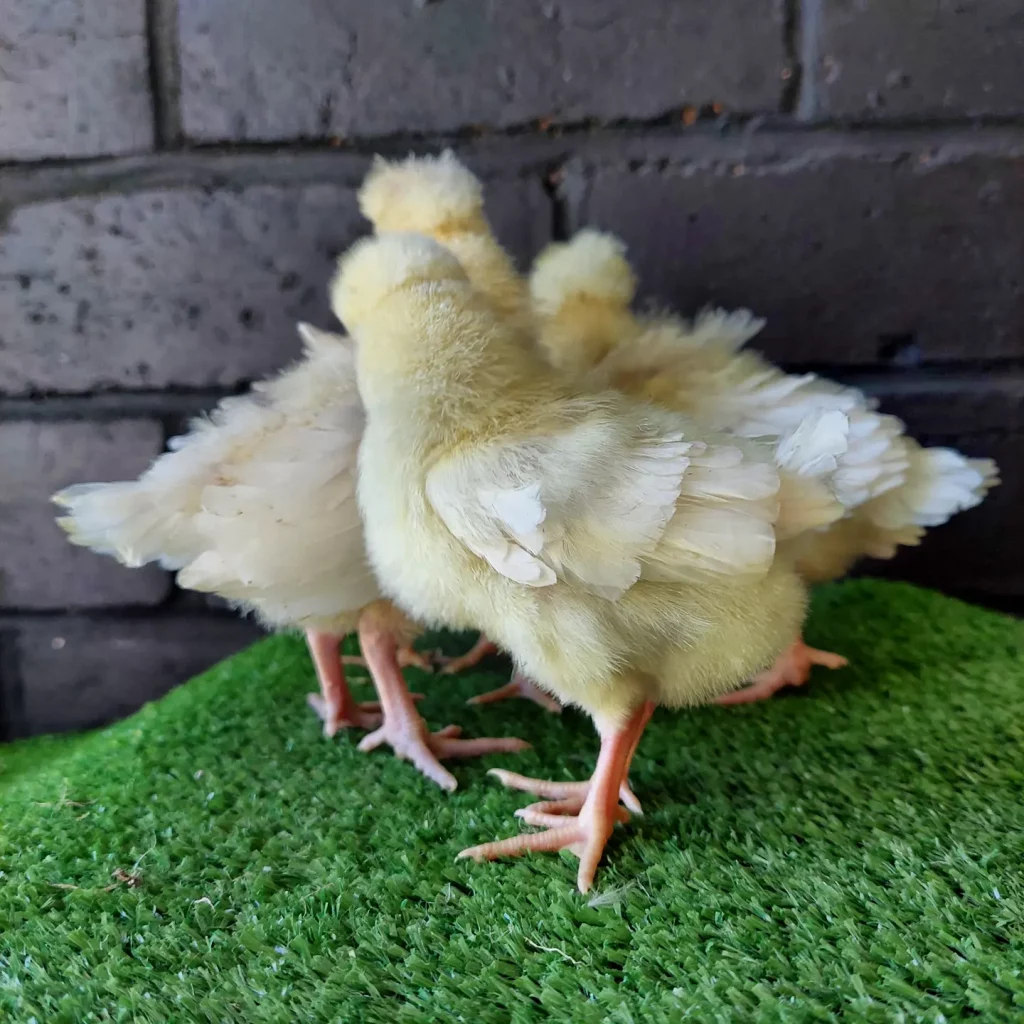
Q. How and when can you tell if a chic is “Frizzled”?
A. Upon hatching, all chicks are covered in downy baby fluff, making it impossible to distinguish between frizzled and straight-feathered chicks.
The first area where feathers begin to grow is the wings. Within about a week after hatching, you can observe the first signs of feather development. A frizzled bird will show a slight curl or curve at the end of its wing feathers, while the feathers of non-frizzled chicks will grow in neatly without any curl. This characteristic is a key indicator of whether a bird carries the frizzle gene.
Q. Are Frizzle chickens hard to care for?
A. Frizzle chickens don’t require any special care beyond what other chicken breeds need. However, their unique feathers may make them more susceptible to certain environmental conditions, such as extreme cold or wet weather. Providing adequate shelter and protection from the elements is important. They may also be more prone to feather breakage or damage, so regularly checking for any issues and providing appropriate nesting materials can help prevent damage to their feathers.
Q. Are Frizzle chickens good pets?
A. They can make excellent pets, especially for those who appreciate their unique appearance. They are generally docile and friendly, making them suitable for backyard flocks or small-scale poultry keeping. Their flight capabilities are limited, and their frizzled feathers may affect their ability to fly to some extent. However, individual temperament can vary, so it’s essential to handle them gently and provide proper socialization.
Q. Do Frizzle chickens lay eggs?
A. Yes, they lay eggs like any other chickens. The egg production can vary depending on the breed and individual bird.
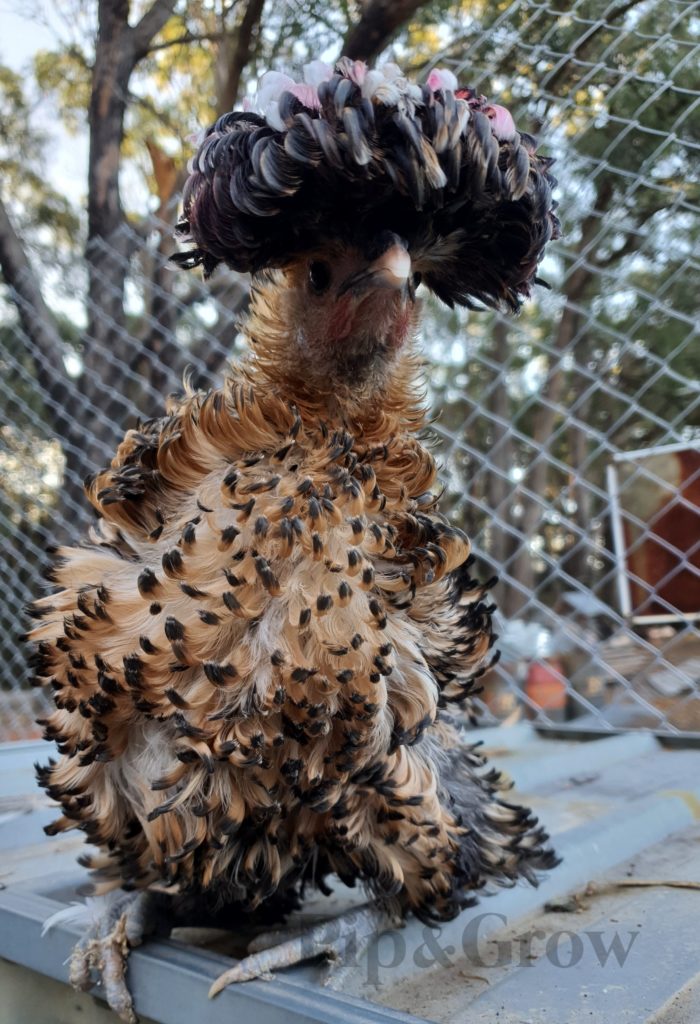
Q. Can’t you breed Frizzled feather type rooster and frizzled feather type hen together? Won’t it increase the chance of “Frizzle” offspring?
A. Breeding frizzle over frizzle can result in offspring known as “Frazzle,” which carries two copies of the frizzled feather gene. These birds often have brittle feathers that are prone to breaking off, making it difficult for them to regulate their body temperature. Depending on the severity, some Frazzle chickens may hatch without any feathers or be unable to grow feathers properly.
Breeding between two Frizzled feather type birds must be carefully considered and genetically planned for specific reasons. Generally, it is not recommended, as ethical breeders prioritize the well-being of the birds and should never breed solely to increase the chance of frizzle offspring.
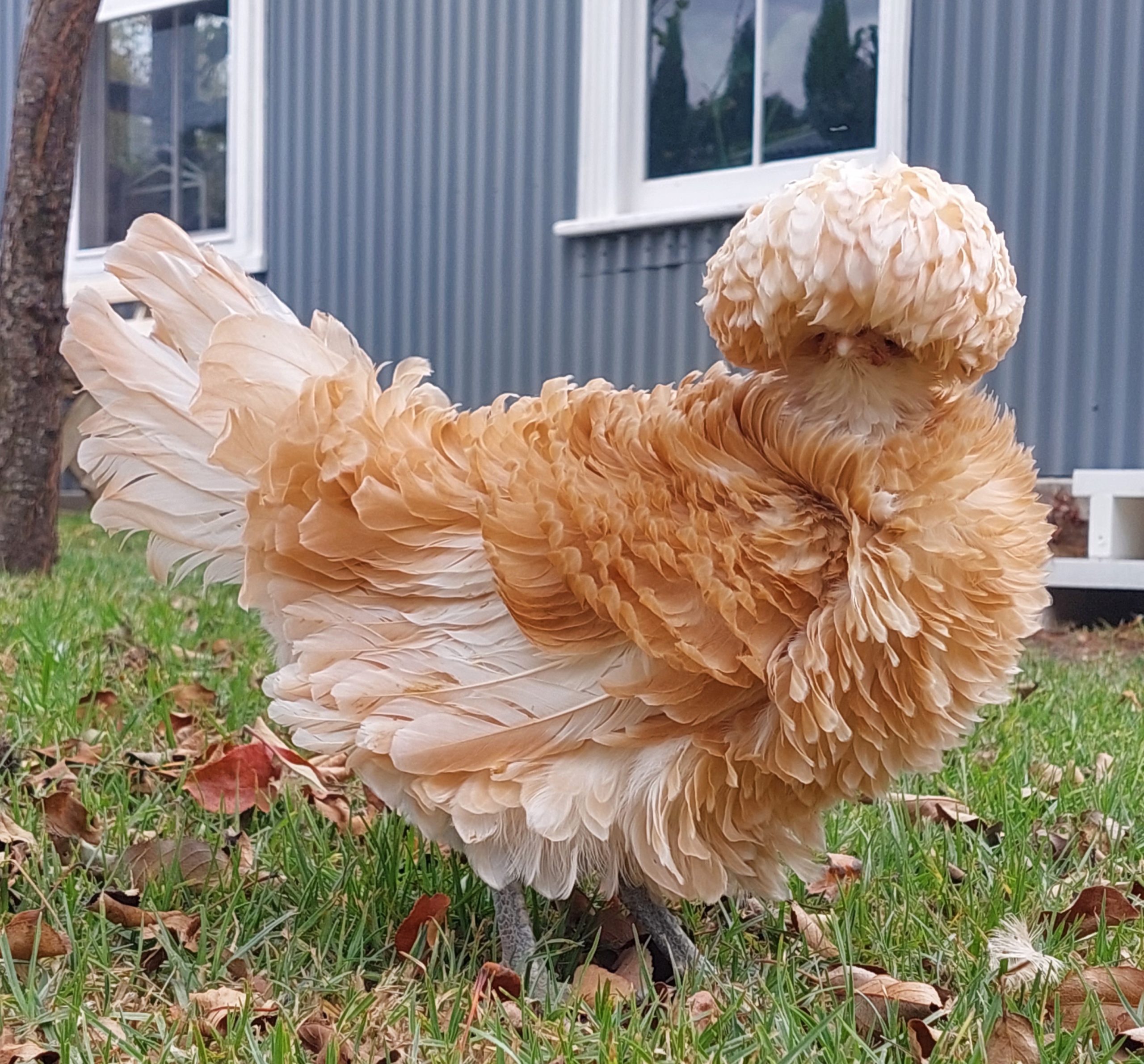
Q. Other than the true breed Frizzle, are all other frizzled Chicken considered as “cross breed”?
A. In Australia, frizzled variants of specific breeds like the Japanese and Polish are permitted to be exhibited under their respective breed categories. Additionally, certain other breeds, such as the Pekin Frizzle, may also be accepted for exhibition. However, they must adhere strictly to the standards of their respective breeds, except for their feather type. The categorization of these birds during exhibitions depends on how the organizers classify them; they may be placed under an “Other type” category if necessary.
On the other hand, if a bird is merely a result of crossing with frizzled birds without consideration for specific breed standards, it is typically regarded as a crossbreed.
